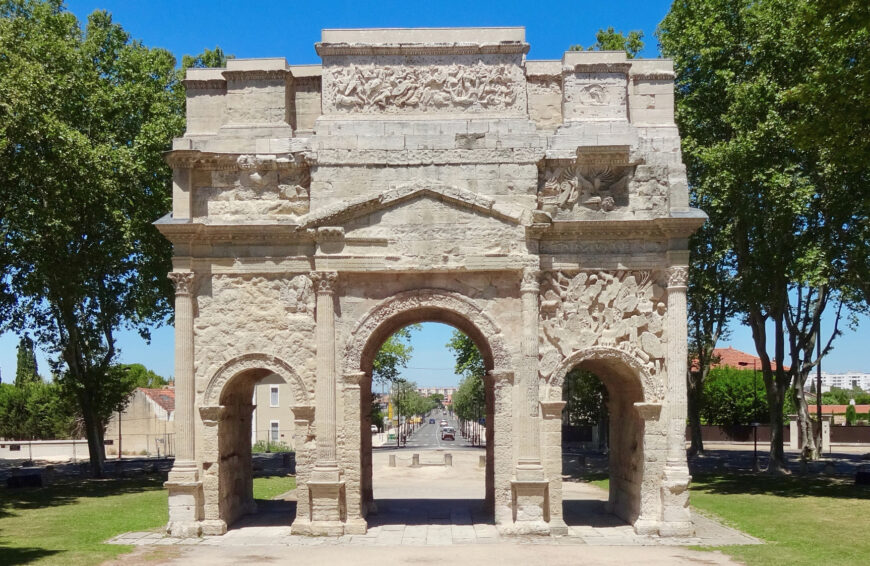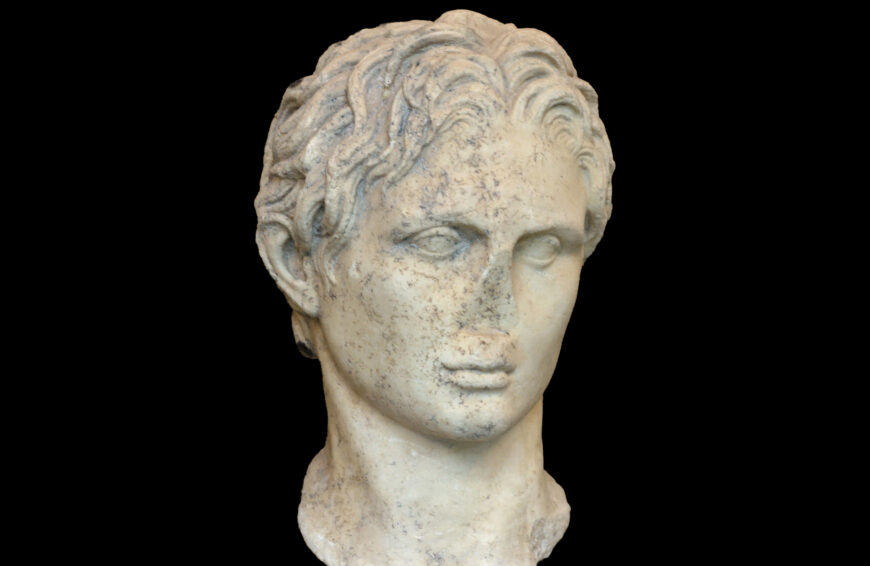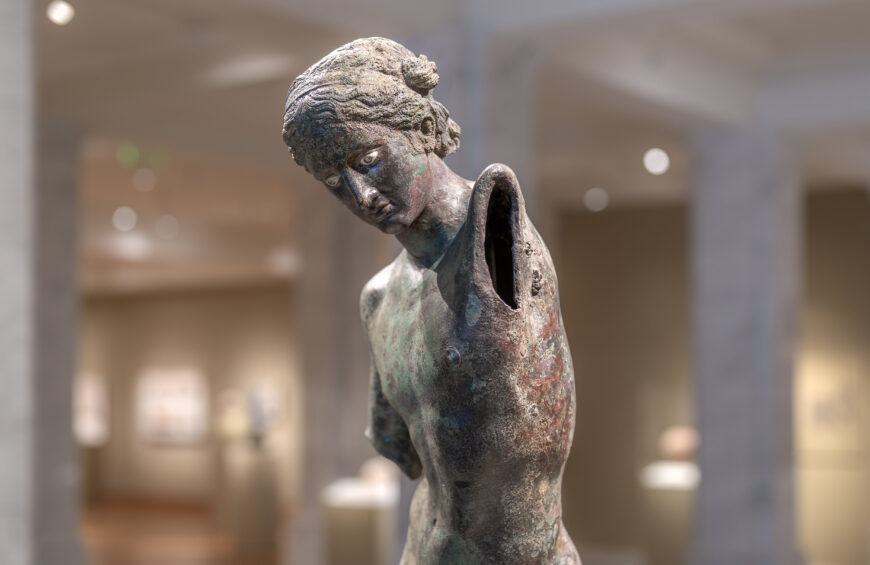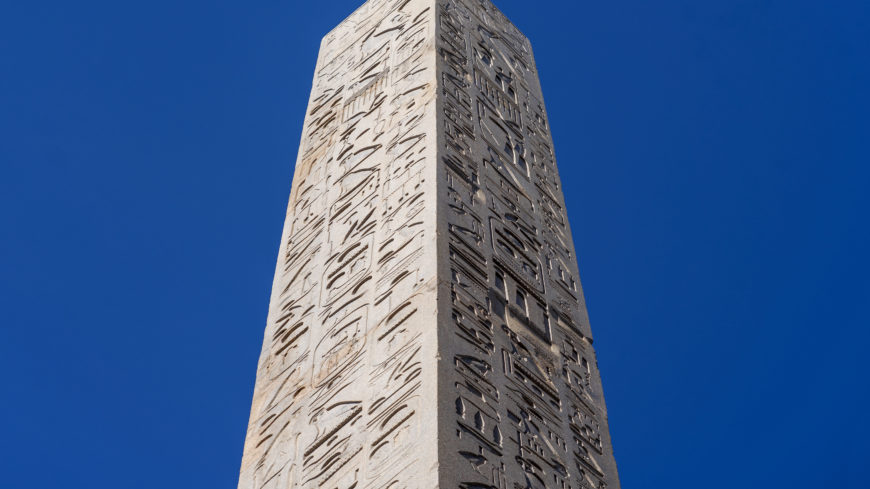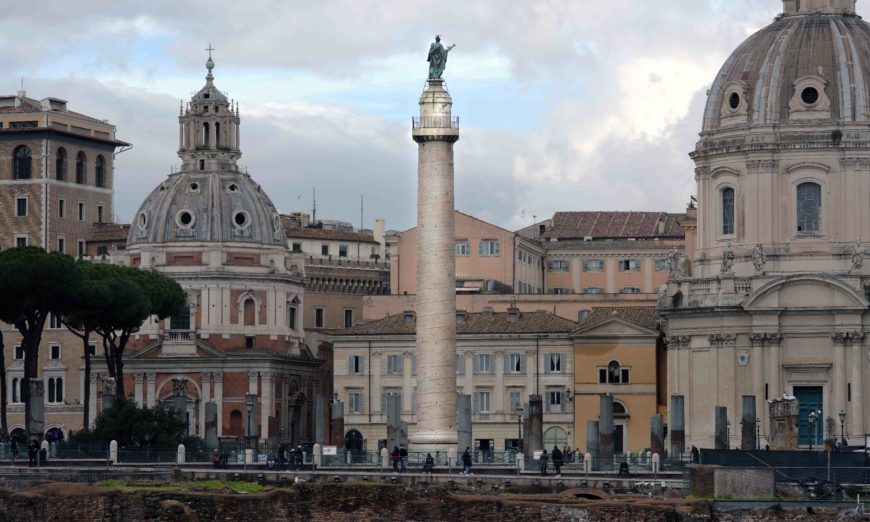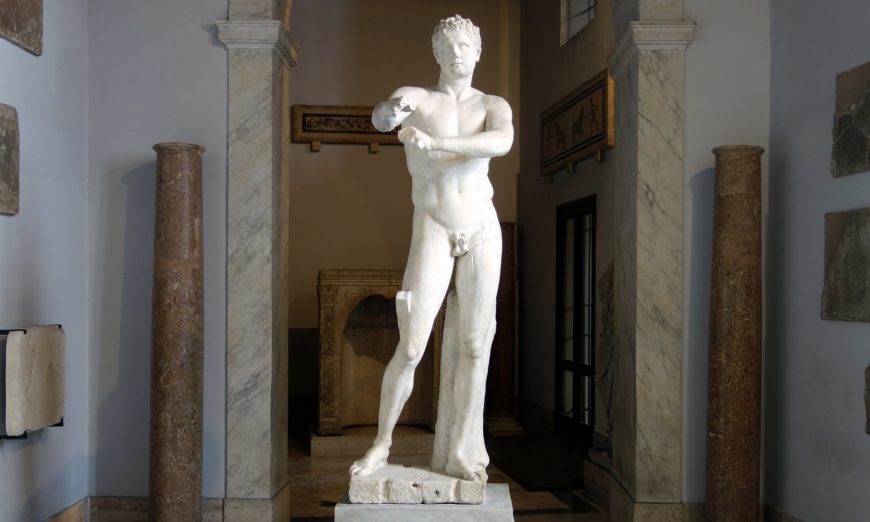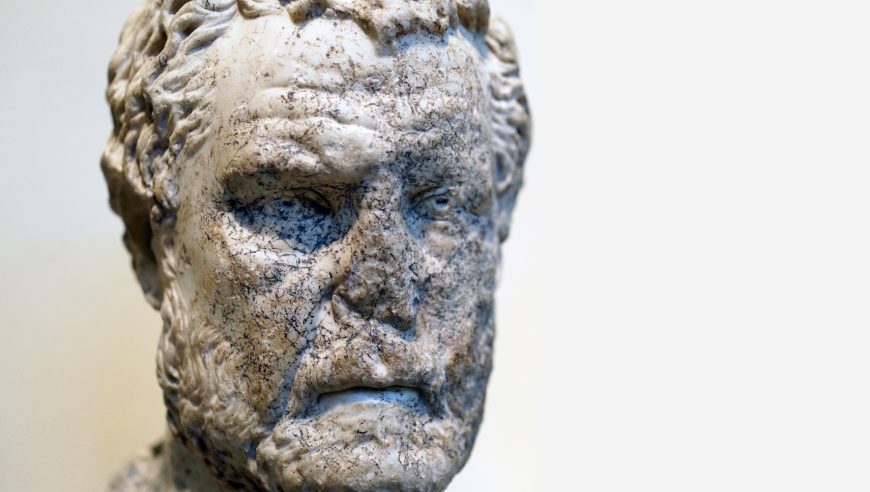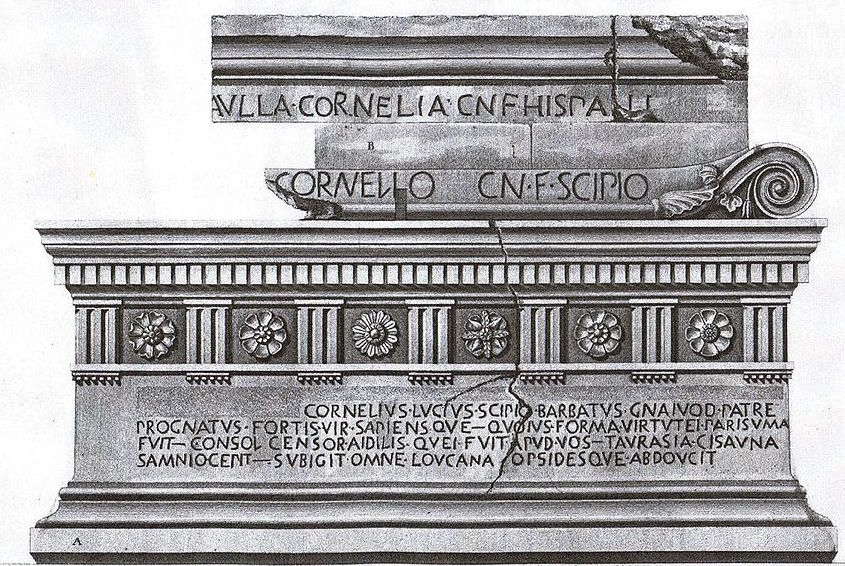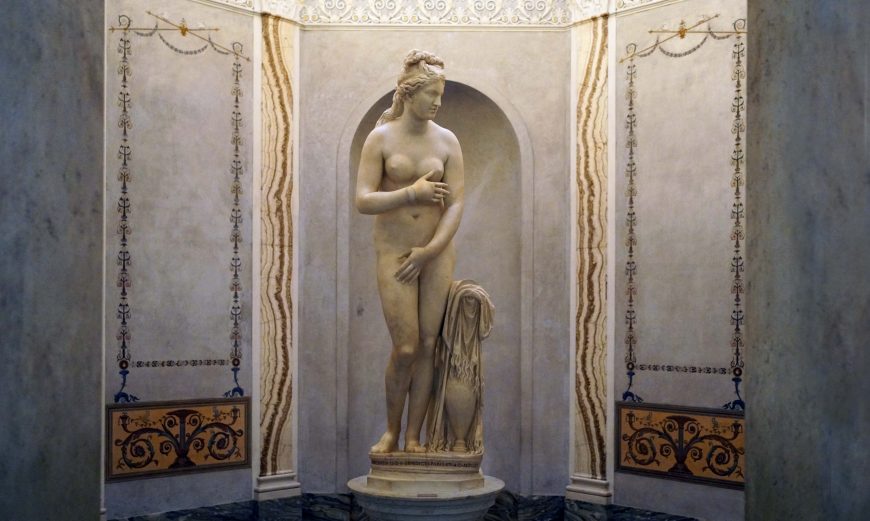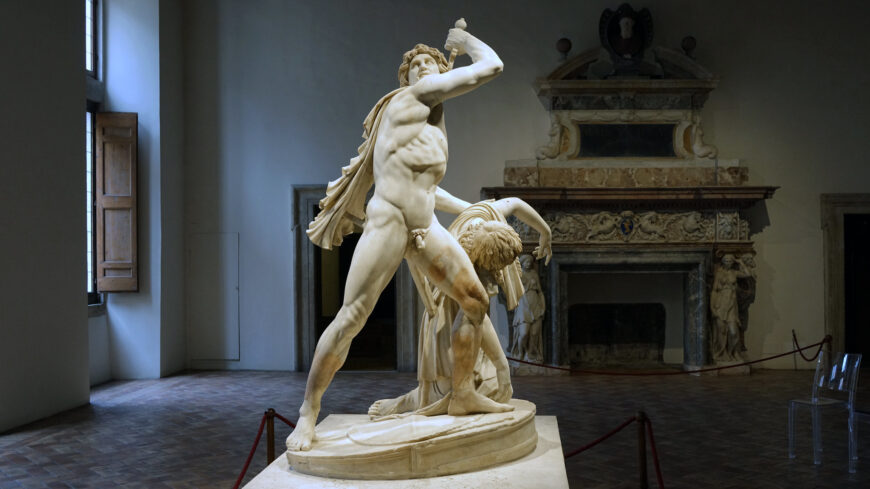Learn how the solid, abstracted forms of these co-emperors reject earlier understanding of the human body.
Portraits of the Four Tetrarchs, c. 305 (Constantinople), porphyry, 4 feet 3 inches high (Saint Marks, Venice)
[0:00] [music]
Dr. Steven Zucker: [0:00] On the side of Saint Mark’s Basilica in Venice is a sculptural group. Actually, two pieces of stone put together that show the “Four Tetrarchs.”
Dr. Beth Harris: [0:00] They really are embedded in the corner of the church. They obviously don’t belong.
Dr. Zucker: [0:19] For one thing, the color is different.
Dr. Harris: [0:21] That’s true, and there is a sense in which there are a lot of things here on the side of the basilica that seem to have been just added.
Dr. Zucker: [0:29] That’s absolutely right. We see all kinds of fabulously colored marbles, as well as columns which we know were spoils from the Fourth Crusade, when the Venetians, who had tried to get to the Holy Land, didn’t make it and instead sacked other Christians in Constantinople.
Dr. Harris: [0:00] They brought back enormous spoils. The Tetrarchs likely came in that group.
Dr. Zucker: [0:56] What’s important to remember is that the Tetrarchs are not Byzantine. The Tetrarchs are not even Christian. This is sculpture from the last phase of polytheistic Roman culture.
Dr. Harris: [1:01] In the 3rd century, the Roman Empire suffered tremendous civil wars. At the end of that century, the emperor Diocletian decided that the empire might be more stable if he divided power.
Dr. Zucker: [1:22] What he did is he set up a structure called the tetrarchy, which means “four” and refers to four rulers. There were two Augusti, that is two senior emperors, and then there were two Caesars, two junior emperors.
Dr. Harris: [1:29] Art historians think that the four figures that we see here represent the four emperors and co-emperors, Diocletian, Maximianus, Galerius, and Constantius. Now, it’s really impossible to tell who’s who.
[1:50] I think it’s important to put this in the context of the history of portraits of emperors. There are portraits of emperors going back to the first emperor, Augustus.
Dr. Zucker: [1:58] And they had been very individualized. These were real portraits. Yes, they might be idealized, but there was always enough specificity so that you could recognize. In fact, their very purpose was so that the likeness of the emperor could be distributed throughout the empire.
Dr. Harris: [0:00] We see during this period of the tetrarchy [that] that is completely gone [laughs]
Dr. Zucker: [2:15] It’s all gone.
Dr. Harris: [2:16] First of all, the figures stand in very similar positions. Their bodies are the same sizes. Aside from the fact that in each pair, one is bearded and one isn’t, their faces look exactly the same and are very abstracted.
Dr. Zucker: [2:30] The costume is identical as well. I want to go back to that idea of the beards for just a moment. Scholars have hypothesized that it’s the Augusti who are bearded. That is, these are the elders, whereas the clean-shaven figures are the Caesars.
Dr. Harris: [2:47] Look at their faces. Their eyes have been reduced to lozenge shapes. I use the word abstract where facial features have none of the subtlety of the way that our faces really look in the world.
Dr. Zucker: [2:59] It’s not just the faces, it’s the structure of the body. Where is the contrapposto? Where is the understanding of the musculature, of the bone structure? This is the art that has inherited the legacy of ancient Greece and Rome, and yet there is clearly this rejection of all of the naturalism that had come before.
[3:15] Now, part of this may have to do with the fact that this is carved in porphyry. This is a purple porphyry, and it’s a stone that was reserved for the emperor. It was a very rare stone. It was imported from Egypt. It’s quite hard, and so unlike marble, this would have been much more difficult to get the fine features that we associate with much classical sculpture.
[3:35] Nevertheless, there is finely carved porphyry, and so this was a decision.
Dr. Harris: [3:45] The figures, although lacking the naturalism of the tradition of ancient Greece and Rome, express valor, a sense of working together, of harmony, they grasp each other, their faces are turned toward each other, their bodies are turned toward each other. They express a solidity that I imagine was somewhat reassuring in the face of all of the turmoil of the 3rd century.
Dr. Zucker: [4:03] I think that’s exactly right. They are rendered as military figures, and there is a real sense of solidarity.
Dr. Harris: [4:08] Look at how they grasp their swords.
Dr. Zucker: [4:15] Those are great swords. They seem to have eagle hilts, if you look closely. But look at the way that the drapery is rendered, for instance, in the forearms.
[4:23] This so makes the point. If you look at the drapery of a classical figure — if you look at the drapery on the East Pediment of the Parthenon, for example — you have this wonderful, billowing, flowing drapery that reveals the structure of the body below it.
[4:33] Here instead you have a series of simply cut linear forms. These are just lines that are decoratively added to the surface but in no way reveal the structure of the body below.
Dr. Harris: [4:45] Their proportions are also not natural. Their heads are too big for their bodies, their shoulders are narrow. We are at the edge of the end of the Roman Empire and the beginning of the Christian period.
[5:00] The next emperor who becomes himself a tetrarch is Constantine, although he defeats his co-emperor and establishes himself as the sole emperor once again of Rome. Then he decriminalizes Christianity, so Christianity becomes very soon the official religion of the Roman Empire.
Dr. Zucker: [5:22] What’s so interesting is that so much early Christian art and certainly early medieval art will abstract the human figure. We understand that in relationship to the new religion, to trying to not celebrate our earthly experience but to look towards the heavenly.
[5:38] The problem when we look at something like this is that we’re seeing a similar kind of abstraction of the human body without that kind of religious overlay. We try to understand why there is this rejection of the earlier classicism without the religious aspect, at least at the highest levels of society.
[0:00] And we are left to wonder.
[0:00] [music]


